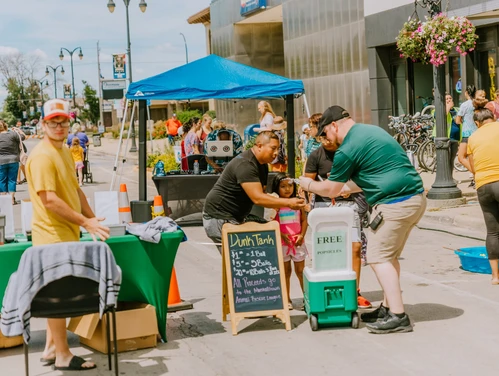Sustainable Land Use Planning
Land use planning impacts many aspects of a person's daily lives. The types of land use in a community impacts a variety of factors from fiscal sustainability to the health of citizens. Smart land use planning makes the most of existing infrastructure and is part of a larger regional vision of quality of life. Land use decisions should support the following sustainable community principles:
- Mix land uses
- Take advantage of compact building design
- Create housing opportunities and choices
- Create walkable communities
- Foster distinctive, attractive communities with a strong sense of place
- Preserve open space, farmland, natural beauty, and critical environmental areas
- Strengthen and direct development toward existing communities
- Provide a variety of transportation choices
- Make development decisions predictable, fair, and cost-effective
- Encourage community and stakeholder collaboration in development decisions
More information at Smart Growth America
City Development Board
The City Development Board reviews cities’ requests for boundary changes, approves and denies requests, and maintains records on city development actions.
The board also:
- Addresses islands of unincorporated land and unincorporated secondary roads adjacent to city boundaries
- Provides land use planning assistance for sustainable community growth
Resources
There are five types of processes to understand when considering an annexation:
- Voluntary Annexation not in an Urbanized Area
- Voluntary Annexation in an Urbanized Area
- Voluntary Annexation (80/20) in an Urbanized Area including Land without the Consent of the Owner
- Voluntary Annexation (80/20) not in an Urbanized Area including Land without the Consent of the Owner
- Involuntary Annexation
Email Address
